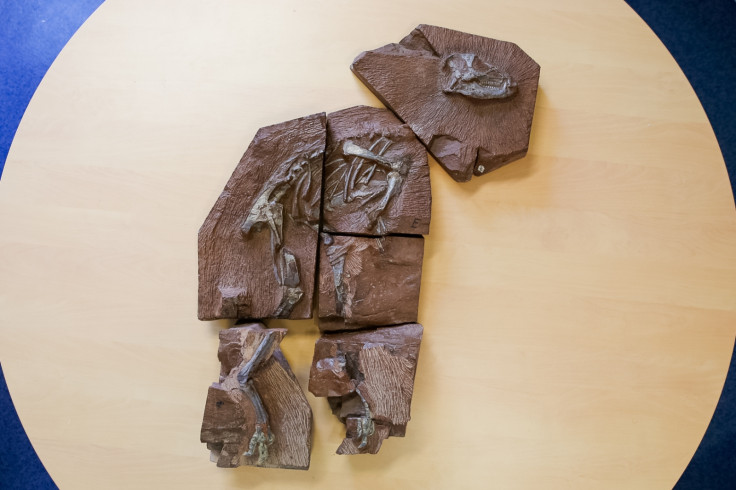Super scanner reveals brain of 200 million-year-old dinosaur
Synchrotron scans of most complete fossil ever discovered to reveal how this primitive dinosaur species lived
High-energy X-rays of a primitive species of dinosaur are providing palaeontologists with an unprecedented view of its brain and physical characteristics – details which will shed light on the evolution of dinosaurs as a whole. Researchers used a synchrotron – 100 billion times brighter than the X-rays used in hospitals – to examine the skeleton of a Heterodontosaurus tucki, a small dinosaur that lived 200 million years ago.
The specimen of H. Tucki was discovered at the bottom of creek near a small village in South Africa in the mid-2000s. The tiny skeleton of the juvenile dinosaur was one of the most complete ever discovered for this species. The bones were covered in metallic oxide, however. This meant it was difficult for palaeontologists to get through to complete a full analysis as doing so risked damaging the bone. As a result it sat in a museum for many years.
"The dinosaurs are waiting for the technology to appear," project leader Jonah Choiniere told IBTimes UK. He and his team took the skeleton to the ESRF, the European Synchrotron Radiation Facility in Grenoble, France, to perform scans on it in the synchrotron. They have now completed their study of the bones and have announced their preliminary findings.
H. Tucki had initially been chosen for scanning because of how complete its rib, stomach and plates were. Researchers had thought scanning it would provide an insight into how very primitive dinosaurs breathed. "This skeleton preserves features that aren't present in the other skeleton," said Choiniere.

"Those features are along the belly and the body midline and along the ribs. It has two things of great interest – one ribs and stomach, the other the plates of bone between ribs along the back. Palaeontologists hypothesise both features played a role in it being able to expand and contract the chest cavity and abdominal cavity.
"Dinosaurs and birds today don't and didn't have diaphragms like mammals do. So to change the volume of the chest cavity to pull air into the lungs, they needed a different way to what mammals have – and that is what muscles attached to ribs, stomach and plates would have done. When we saw features we thought 'this is cool maybe it's evidence of birdlike breathing that is very different evolutionary from birds'."
On carrying out the scan, the team was able to reconstruct the skeleton in incredible detail. This included the brain cavity, which will allow scientists to understand far more about the species, including its behaviour and senses. Vincent Fernandez, who worked on the research, said: "One of the first things we saw from the skull was that there was not a lot of deformation. This means we should be able to get some good information. If we make an endocast from the brain case we will have a pretty good image of what the brain looked like.

"We know we can pick up the cavity where the inner ear sits. We will see if we can follow nerves from the brain to different parts of the skull to find out what part was used preferably – if it was a dinosaur that was better at smelling or seeing etc. The information presented will let us study a lot of things. And we have the whole skeleton – so given its quality we will probably get a lot of information from the rest of the skeleton as well."
Choiniere said the analysis of the brain is particularly important to the understanding of dinosaur evolution. At 200 million years, this species lived towards the beginning of age of the dinosaurs, some 230 million years ago.

"As our sample size for these brains increases, we can answer questions about how fast a bird-like brain evolved. When does it appear in the evolutionary history of dinosaurs? Does it predate flight? Or at the same time? Do different types of brains evolve in different dinosaur groups? I think all those clues will tell us about how evolution proceeds," he said.
"It's one of the most primitive and one of the oldest to have this level of detail available on its skull. It's an important data point for anchoring what we know about that group and everything that follows like triceratops and duck billed dinosaurs.
"There is a set of questions we can now answer with these scans. But there's lots of questions we haven't thought to ask yet. As we build up picture and datasets, the next generation of students will ask these questions."


© Copyright IBTimes 2025. All rights reserved.






















